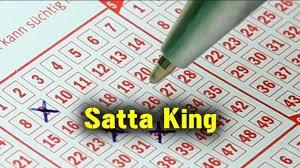Charts are powerful tools for visualizing data, analyzing trends, and making informed decisions. Whether you are using charts for business, academic purposes, or understanding trends in games like Satta King, it’s important to know how to interpret them accurately. With the increasing popularity of data-driven decision-making, tools like charts simplify complex datasets into understandable visuals.
If you’re looking at a chart, especially in contexts like the Ghaziabad record 2024, you should understand its purpose, advantages, and best practices. This article delves into what you should keep in mind while using charts to extract the most value without making common errors.
Advantages of Using Charts
Charts offer numerous benefits that make them indispensable for analyzing data. Here are a few advantages to consider:
- Data Simplification:
Charts condense large datasets into a visual format that is easier to understand. For instance, viewing a trend line in the Ghaziabad record 2024 can help identify patterns in historical data, making it simpler to interpret. - Enhanced Decision-Making:
With the right chart, stakeholders can make better decisions. Whether tracking performance in a game like Satta King or analyzing sales trends, visual data provides clarity. - Time-Saving:
Charts save time by eliminating the need to manually sift through rows of raw data. Instead, you can quickly observe trends, relationships, and outliers. - Comparison of Trends:
By juxtaposing multiple datasets on a single chart, you can compare trends effectively. This is particularly useful when analyzing the Ghaziabad record 2024 alongside other records. - Improved Communication:
Charts provide a universal language for presenting data, ensuring everyone, regardless of their background, can understand key points.
Types of Charts
Understanding the types of charts available helps you select the right one for your needs. Here are some common chart types:
- Line Charts:
Used for showcasing trends over time, line charts are perfect for tracking records like Satta King outcomes or analyzing financial performance. - Bar Charts:
These are excellent for comparing different categories. For example, you could use a bar chart to compare Ghaziabad record 2024 outcomes to other city records. - Pie Charts:
Best for showing proportions, pie charts work well when visualizing how different factors contribute to a whole. - Scatter Plots:
Scatter plots display relationships between two variables, making them great for exploring correlations, such as between market trends and gaming results. - Histogram:
Ideal for showing data distribution, histograms can be used to analyze frequencies, such as the most common numbers in Satta King. - Heat Maps:
These visually represent data intensity. For instance, a heat map could highlight high-traffic times for gaming enthusiasts tracking the Ghaziabad record 2024.
Features of a Good Chart
To make the most of any chart, ensure it has the following features:
- Clarity:
A chart should be easy to read and interpret. Overloading it with unnecessary data points or visuals can lead to confusion. - Relevance:
Include only the data that supports your objective. If you’re analyzing Satta King results, focus on relevant numbers and trends instead of unrelated information. - Accuracy:
Ensure the data inputted into the chart is accurate and up-to-date. Outdated information can lead to misleading conclusions, especially when analyzing records like the Ghaziabad record 2024. - Proper Labeling:
Axes, data points, and legends should be clearly labeled. This eliminates guesswork and provides a complete understanding of the chart’s meaning. - Consistency:
Use consistent color schemes, scales, and units throughout your chart to avoid confusion. - Interactivity (if applicable):
For digital charts, interactivity, such as zoom-in features or clickable data points, can enhance usability.
Steps to Use Charts Effectively
When using charts, follow these steps to ensure proper interpretation:
- Understand Your Objective
Before analyzing a chart, determine what you want to learn. Are you tracking the Ghaziabad record 2024 for specific trends, or are you comparing outcomes across multiple datasets?
- Choose the Right Chart Type
Select the chart type that best fits your data and objective. A bar chart might be better for comparisons, while a line chart is ideal for trends over time.
- Inspect the Source Data
Always verify the source of the data used to create the chart. Data integrity is crucial, especially in contexts like Satta King, where accuracy can influence decisions.
- Analyze Patterns and Trends
Look for noticeable trends, peaks, and troughs. For example, if a chart shows fluctuations in Ghaziabad record 2024 outcomes, identify what could have caused those changes.
- Beware of Misleading Representations
Charts can sometimes be manipulated to misrepresent data. Pay attention to scales, axis truncations, and omitted data points.
- Use Tools for Interactive Analysis
For digital charts, utilize interactive features to dive deeper into specific areas of interest.
- Draw Conclusions Based on Data
Base your interpretations and decisions solely on the data presented. Avoid making assumptions not backed by the chart.
Conclusion
Charts are indispensable tools for visualizing and interpreting data. Whether you’re analyzing the Ghaziabad record 2024, tracking trends in Satta King, or exploring other datasets, understanding how to use charts effectively is essential. By choosing the right chart type, focusing on clarity, and analyzing patterns systematically, you can derive meaningful insights and make data-driven decisions. Always keep in mind the importance of accuracy, proper labeling, and relevance to avoid misinterpretations.
FAQs
How do I choose the right chart for my data?
Choosing the right chart depends on your objective. For trends, use line charts; for comparisons, use bar charts; and for proportions, use pie charts.
What should I check before trusting a chart?
Verify the source of the data, ensure proper labeling, and check for any potential manipulation in the scale or representation.
Why are charts useful for analyzing Satta King results?
Charts simplify the analysis of complex data, making it easier to identify winning patterns and trends in Satta King Outcomes.
Can I compare Ghaziabad record 2024 with other data on a single chart?
Yes, you can use comparative chart types, like grouped bar charts or dual-axis line charts, to analyze multiple datasets side-by-side.
What are common mistakes to avoid when using charts?
Common mistakes include choosing the wrong chart type, misinterpreting scales, overloading charts with data, and using inaccurate data.
How can interactive charts improve data analysis?
Interactive charts allow you to zoom in, filter data, and view specific trends, making them highly effective for detailed analysis.









